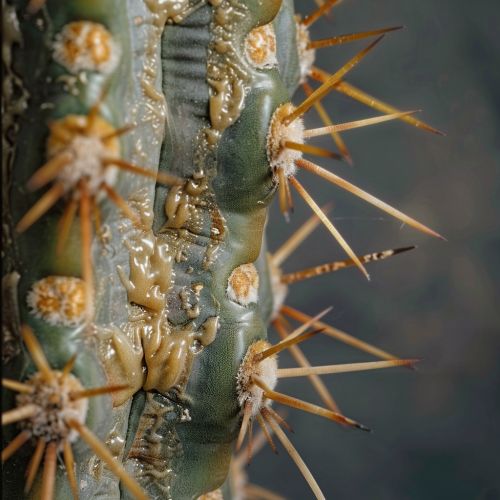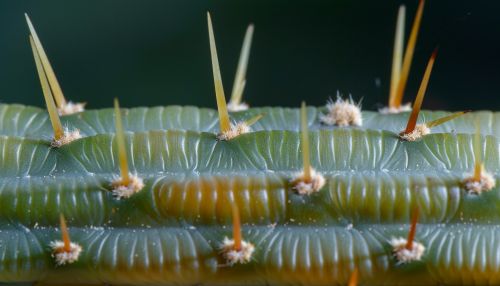Cactus
Introduction
The cactus is a unique type of plant that belongs to the family Cactaceae. They are well known for their ability to thrive in arid and dry environments, largely due to their numerous adaptations such as thickened, succulent stems which store water and spines which reduce water loss through transpiration.
Morphology
Cacti exhibit a wide range of shapes and sizes. The smallest species, Blossfeldia liliputana, measures just 1 cm in diameter at maturity, while the largest, Pachycereus pringlei, can reach heights of up to 19.2 meters.
Stems
The stem is the main site of photosynthesis in cacti, as most species lack leaves. The stem is typically succulent, meaning it is thick and fleshy, adapted to store water. The surface of the stem is often ribbed or fluted, which allows it to expand and contract easily.
Spines


Cacti have spines instead of leaves. These spines, which are modified leaves, help to protect the cactus from predators and also provide shade that helps to reduce water loss.
Flowers
Cacti produce flowers, which are usually large and showy to attract pollinators. The flowers usually have many petals and stamens, but only a single style, which may branch at the end into more than one stigma. The ovary is usually buried in the stem to protect it from the harsh desert environment.
Roots
The root systems of cacti are generally shallow and spread out widely, to take advantage of any rainfall. Some cacti produce specialized roots, known as contractile roots, which pull the plant deeper into the ground during dry periods.
Distribution and habitat
Cacti are native to the Americas, ranging from Patagonia in the south to parts of western Canada in the north. They are also found in the Caribbean islands. Most cacti live in habitats subject to at least some drought. Many live in extremely dry environments, even being found in the Atacama Desert, one of the world's driest places.
Adaptations
Cacti have many structural adaptations that allow them to survive in the desert. These include their spines, succulent stems, and their shallow, widespread root systems.
Water conservation
Cacti have a thick, waxy coating that prevents water loss. They also have a unique process of photosynthesis, known as Crassulacean Acid Metabolism (CAM), which allows them to conserve water by taking in carbon dioxide at night, when the air is cooler and more humid.
Temperature tolerance
Cacti are also adapted to handle extreme temperatures. They can survive in conditions ranging from freezing cold at night to scorching heat during the day.
Reproduction
Cacti reproduce by means of seeds, which are often dispersed by birds and other animals. Some cacti also reproduce asexually, by budding.
Uses
Cacti have numerous uses. Many species are cultivated as ornamentals. Others, such as the prickly pear and saguaro, produce edible fruit. The stems of some cacti are also consumed, either raw or cooked.
Conservation
Many cactus species are threatened by habitat loss. Over-collection for the horticultural trade is also a major threat.
